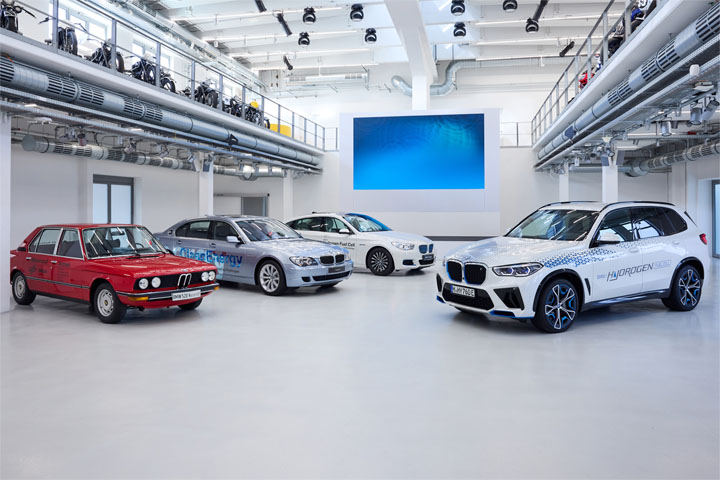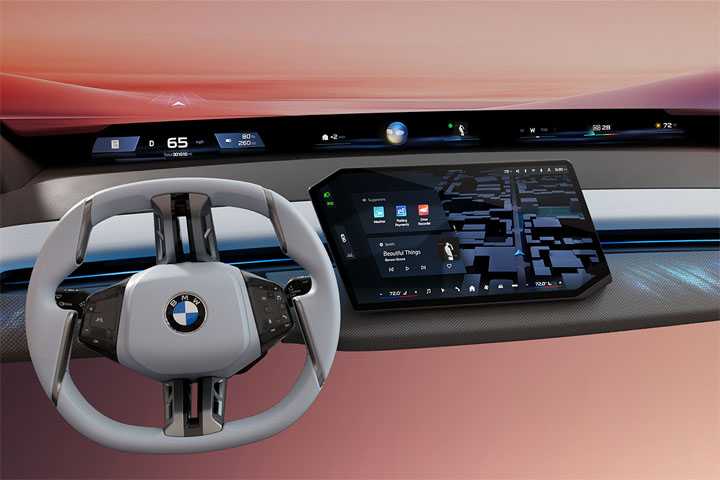In the “WEffect” sustainability series, the BMW Group highlights the sustainable contribution made by a wide range of people in the company – and the motivation that inspires them. Today: Helen Kövary.

Sustainability has many facets at the BMW Group because we are using this term to harmonise business, the environment and society. If we are to successfully put these high standards into practice, we need our employees’ commitment. Everyone can play their part in making the BMW Group sustainable.
So, who are all these colleagues who make sustainability part of their everyday work? What drives them to roll up their sleeves throughout the company? In its “WEffect” sustainability series, the BMW Group introduces employees who play their daily part in the broad and responsible further development of our company.
In this edition of the series, Helen Kövary, interior designer in the ConnectedWorks project team, explains how she makes an office a place where people like to be.
Helen Kövary, do you prefer working in an office or a home office?
Helen Kövary: It depends on what I’m doing. I really enjoy being in the office, especially because of the personal interaction with colleagues. But I also enjoy the freedom of being able to fully concentrate at home when I’m preparing presentations, or walk through the park during a phone call and not having to take time off work to let a tradesperson into the flat, for example.
If we can all work so flexibly, what role do offices and your own desk still play in the company?
Kövary: During the pandemic, it became clear that although many colleagues can work very well from home, some element of being together in the company is enormously important for real interaction and creative collaboration. Besides, we are social beings – being alone at home is not a good long-term option for most people. And if something is not good for us, this naturally has an impact on creativity and productivity in the medium and long term. Of course, if we change office times, this also creates new challenges in terms of the use of space. Our office space is scarce, so we need to use it as wisely as possible. If everyone has their own permanent workplace, but mobile work is the order of the day, valuable space is left empty. On other days, meeting areas are in short supply and it gets too noisy because everyone is on the phone at the same time and has to hold their discussions in the middle of the corridor. However, if office space usage is freely configurable and there are different zones for different types of work, I can look for the space that suits my work on that particular day. Creative communal areas are just as important as quiet zones. That's why, in future, we will separate “loud” from “quiet” even more distinctly and find transitions between the two. So there will be very quiet, screened-off work areas, almost like in a library. We will also create really cool meeting places. We shouldn’t fear comparison with start-ups. We will design these rooms with different heights and shapes of furniture. This changes the configuration of the space and results in agility when working. Meetings take on a different dynamic. Creativity emerges. But it is also important that each department has a home base, a kind of “home zone” – and like their home, employees should have a certain amount of freedom in how they design this place. “ConnectedWorks” aims to achieve all of this.

You describe it very vividly; you can almost see the new work areas growing in your mind’s eye. What is your personal goal? What drives you?
Kövary: I am an interior designer with heart and soul. For me, it’s about designing spaces for people. An office should be a place where people like to come; one that meets their needs. I see this as a social and very human form of sustainability. This is also the idea behind ConnectedWorks. When a working environment connects the different needs that people in the company have, it fulfils a social purpose as well as an economic one. Because when we are happy with our environment, we enjoy our work more. As a result, we are more effective, more creative and get ill less often. This is sustainable.
ConnectedWorks is already being implemented step by step in the BMW Group, and more and more buildings are being designed along these lines. What obstacles get in your way?
Kövary: In most cases, it’s about the human and the interpersonal. We are all different. That’s a really good thing. Some don’t like desk sharing, others are wary about open creative spaces. Others just like to have their own table to sit at with the same colleagues around them. Our new concept means you will sometimes sit next to your favourite co-worker, sometimes next to the trainee and sometimes next to the boss. This can create interaction and more transparency across all hierarchies. But status symbols are also falling away; it’s not for nothing that people still speak of the “boss’s chair” and the “management floor”. And some people simply feel threatened by this flexibility and daily change. It is therefore enormously important that the managers play an active part and that a change management team is there to see every part of the change through. When employees have a say in how they design “their” home zone, they accept change more easily. Above all, however, you can clarify concerns and worries that individual employees have early on so that these can then be specifically addressed.

Let’s say you meet Oliver Zipse, the Chairman of the Board of Management of BMW AG, in the lift. He asks what he can do now to support you in your project. What do you say?
Kövary: I would invite him and his fellow board members to join us out in the field from time to time. It would be THE signal for everyone to embrace this form of open, transparent teamworking without hierarchical differences. This may sound like a joke, but the support of the leaders really makes or breaks the success of the project. And the higher a leader is in the hierarchy, the stronger the signal they send.
What successes do you see and what are you proud of?
Kövary: It has a very positive impact on mental and physical health when employees actively choose their environment and shape it the way they need it. We can already see that. Our concept works very well where we can implement it properly. I get a lot of feedback that teamworking is better, spontaneous interactions are taking place – and that people are very happy to come to the office again. I also hear again and again that we work in a very solution-oriented way. Every time I see people I have already worked with again, I experience their happiness. I’m actually proud of that. That is high praise indeed.
So when is it enough?
Kövary: At some point, every project comes to an end. But actually I always keep moving, just like the world around me. The overarching project of designing office spaces that are contemporary and tailored to the needs of employees will never have an end point because, as we all know, change is the only constant in this world. This is exactly what we must, and indeed want to, constantly react to. But that’s what makes my job so exciting, because I always have my finger on the pulse.
In the upcoming portraits from our “WEffect” sustainability series, committed colleagues will also describe their motivation and explain the contribution they are making to sustainability within the BMW Group.





